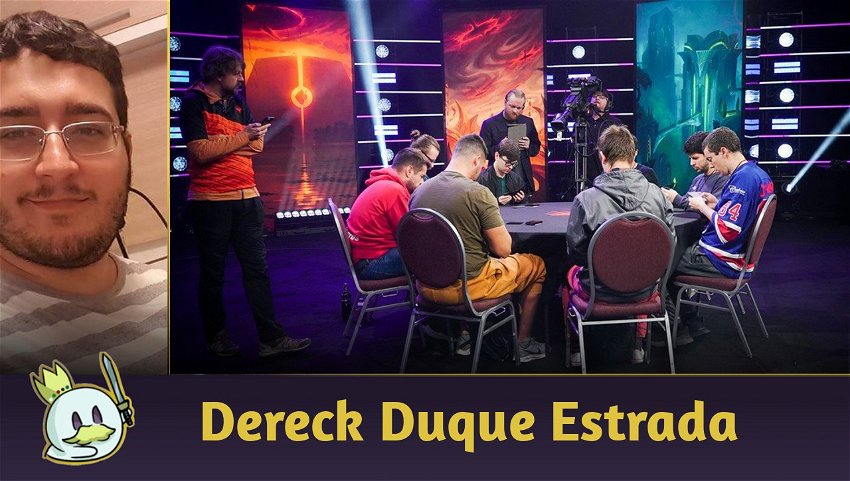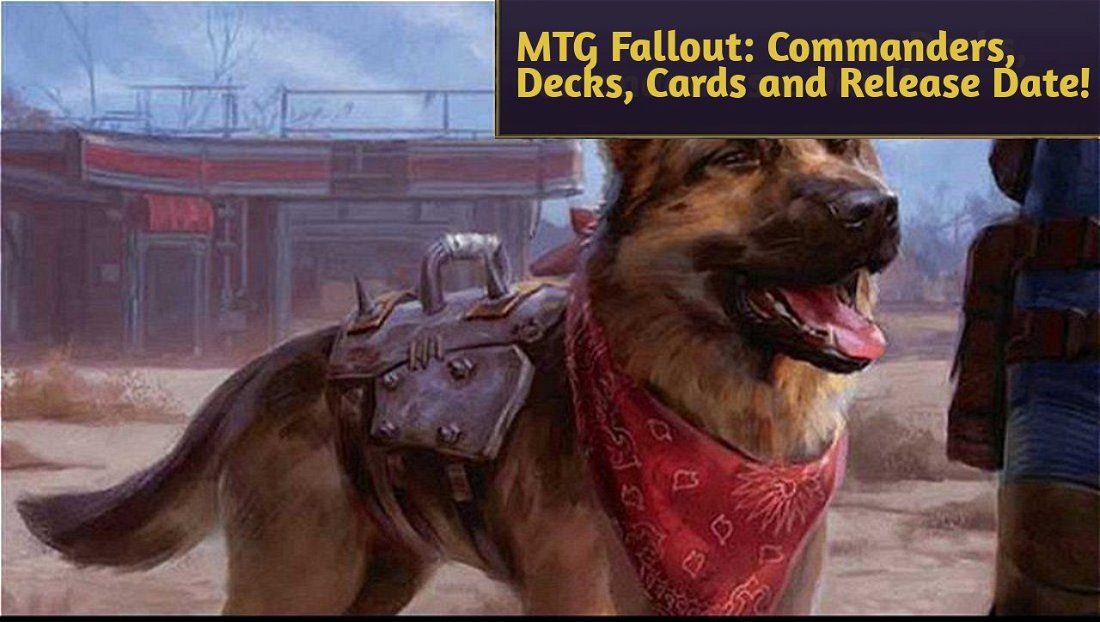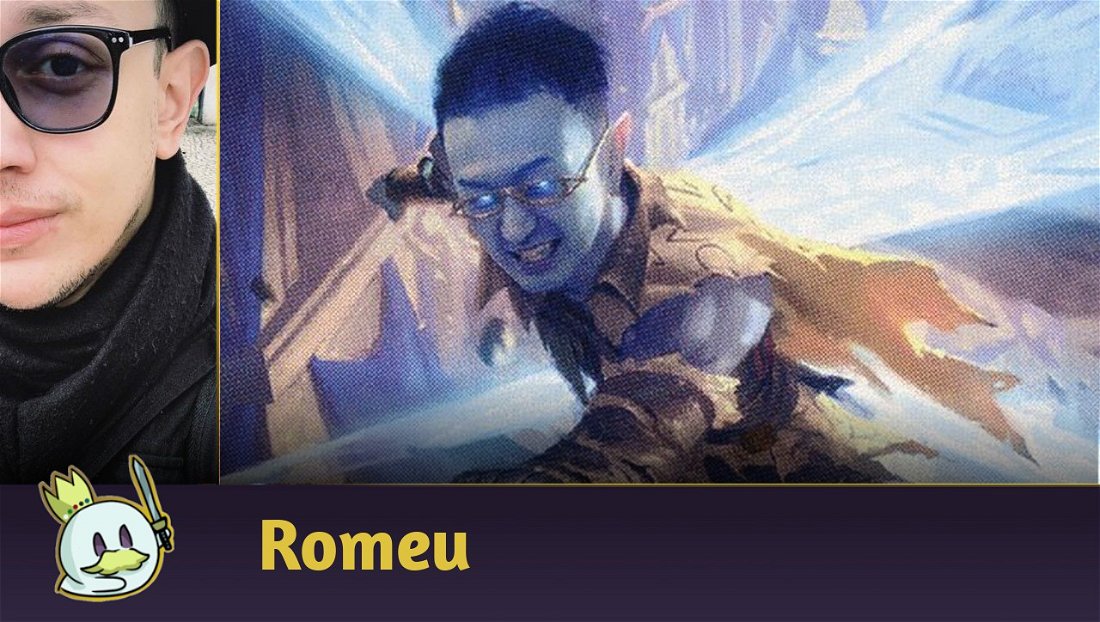As it became possible to play Magic: The Gathering for free through Magic Arena, the limited formats became the main way you could acquire cards from a set and get gems, particularly Draft formats.
Besides its importance in Arena, Draft formats are also used as a competitive format in tournaments, usually related to the current set, and mixing up Draft rounds with Constructed rounds - which is how it has been at the Pro Tours.
Like so, in this article we'll discuss what is Draft, and explain its types and strategy variations so that you can have good results, regardless of the sets. Let's develop and understand the format's foundations together.
Ad
What is Limited in MTG?
Limited is the name we give to formats in which decks are built out of a "limited" pool, be it through the three boosters in Draft, or the six boosters in Sealed. Out of this pool of cards, you'll build a deck of at least 40 cards, and will be able to add as many basic lands you need.
Another Limited trait is that you can modify your deck in between matches, as long as you keep using the cards from your pool.
Now that this introduction is over, let's delve deep into Draft formats.
What is Draft and How Does It Work?
Draft is a format that allows you to build a reasonably cohesive deck, as long as you have a good read on the table and know the interactions between the cards that will be selected.
But how does Draft work?
Usually, a group of 8 people is formed. Afterward, they organize themselves in a circle, each gets 3 boosters, and they open only 1 at first. After this first booster is opened, the player will select the card that interests them the most among all cards available, place it face down on their side of the table, then pass the rest to the player to their left, and get more cards from the player to their right.
This cycle will repeat itself until all cards from the first booster have been selected. For the second booster, the direction of the rotation is inverted, but the cycling pattern remains the same. For the last booster, the direction of the rotation goes back to the initial one, and the cycle is repeated until there are no more cards left.
With all choices made, players will have some time to build their deck.
Deck Structure
Though each type of strategy is unique and escapes the conventional norms, there are some guiding patterns for Draft decks.
The basic deck setting tends to be like so:
Obviously, there are cases in which we stray away from this pattern, but we won't always be really out of it.

In the example above, we have non creature cards which create creatures, and that should be considered when it's time to structure our deck.
Different Types of Draft
All Draft structures are similar, but we have a few variations which make their dynamic more interesting:
Chaos Draft
In this version, we have boosters from different sets, which force players to find micro-synergies between each set. It is very common to use boosters of sets that are in the same block.
Example: Ravnica Allegiance, Guilds of Ravnica and War of the Spark.
Ad
Phantom Draft
In Phantom, you play Draft as usual, but your cards don't stay with you. It is more seen on digital formats, with a bigger reoccurrence in Arena.
Commander Draft
With the pre-release of Commander Legends: Battle For Baldur's Gate, we once again have Commander Drafts. In this format, boosters have 20 cards. Each player picks out 2 cards at a time, totaling 60 cards to form their deck of 59 cards plus the commander. Players add basic land cards according to their needs, just like any other Draft.
Another trait is that this format doesn't have the restriction of bringing only one copy per card, and allows repeated cards, which is different from the usual Singleton Commander format.
Cube Draft
Cube is a type of casual Draft in which a group of cards is gathered by up to 8 players, who then select them and form their decks. Cube can be limited according to the players' choices, and can have any card or even follow restrictions from other formats, such as Pauper, Modern or Pioneer.
Archetypes are defined according to the pool. The number of cards is usually limited to at least 45 cards per player, with an average of 360 cards in a pool for 8 players.
Another point is that Cube can be played in a way that players consider to be the best, and can even be played with a pool that follows the Commander Draft rules. Players can choose their own limits.
Collection Draft
The last and more common type of Draft is the Collection Draft. It can be played with the most recent set, which is how it is usually played, or with specific sets, following a pattern with the set's mechanics.
Mana Base
One of the most important traits to consider when you're deckbuilding is your mana base structure. In a 40-card format, knowing how to balance colors can be more important than how synergistic the cards in your deck are, after all, what's the point in having numerous spells which synergize with each other if you can't pay for their cost?
To help with that, it's important to think of ways to improve your mana generation, so lands that create more than one mana color are important: Tranquil Cove, Plaza of Heroes and Mana Confluence.
Cards that create any mana color or create mana colors you need are other options to guarantee your deck will develop well. Some examples are: Armored Scrapgorger, Honored Heirloom or Llanowar Loamspeaker.
Another resource is the mana filters, which can make it easier for you to access colors in sets that don't have as many options, or when your color combination doesn't provide many ways to correct your mana. Examples include Energy Refractor, Prophetic Prism or Crystal Grotto.

Removals
An important thing to consider when deckbuilding is removals. It is extremely important to have a good grasp on what's available and what are the types of removal each mana color offers.
Ad
Let's discuss the different types of removals each color offers.
White Removals
White removals tend to be conditional. They depend on something to be applied, or they remove the creature from play until another thing happens.
We have, for instance, Banishing Light, which is an enchantment that removes the nonland target permanent as long as it is on board.
Other very common options are cards that disable creatures for combat, such as Pacifism. The problem with these removals is that, if your opponent has an answer for them, these creatures will return to the game. Besides that, this aura has a problem, as it doesn't prevent the creature from using abilities. It is important to consider that when we're reflecting on our deck's structure.
Here are some other examples of conditional White removals:

Besides creature removal, White tends to be able to remove any nonland permanent which is problematic. It is always important to have versatile pieces in your main deck and have specific options in your sideboard to take advantage of the color's versatility.
Blue Removals
Blue can't access direct removals. Usually, the way you deal with creatures with Blue is through counters, delaying your opponent most times.
However, there are some specific pieces which work as "removals" in Blue - all are auras which work in three different ways: tapping the enchanted creature and preventing it from untapping at the upkeep; placing a power debuff on the enchanted creature and reducing its impact on the board; and, lastly, transforming the enchanted creature into another, reducing its power and resistance and removing their abilities.

Black Removals
In Black, there are several types of removal for creatures, be them conditional, the ones that apply resistance and power debuffs, the ones that deal damage, destroy creatures that have been dealt damage in that turn or even the ones that force your opponent to sacrifice a creature.
This versatility ends up making Black one of the best colors to deal with your opponent's threats in Limited, as it has access to low-cost removals that are very efficient in their sets.

Red Removals
We usually find in Red the damage-based removals, so it is important to understand the reach of red removals in their set, and this way grasp what you can use and how.
These removals tend to be very effective on the first few turns. They allow you to keep pressuring your opponent as you attack them.
Another point is that red removals many times can be used to deal direct damage to your opponent, which is a way you can close games.
Ad
Red removals can also have extra costs, which allow you to use bigger effects for less mana, such as Lightning Axe, Redcap Melee or Improvised Club.
Here are some examples of red removals:

Besides these options, Red also has an array of artifact removals, which can be very relevant post-side against decks that get a lot of advantage from specific artifacts. Cards like Abrade stand out as they're never a dead card in your hand.
Green Removals
Green usually uses removals that depend on creatures, be it using this same creature to deal damage to the opponent's creature or by forcing two creatures to battle.

Besides this type of removal, Green also has access to cards that deal with Flying creatures in particular, and therefore brings good sideboard pieces or interesting pieces that can be added to the main deck when they have synergy with the rest of the deck.

Another Green trait is the enchantment and artifact removals. They are important pieces that can be considered for the sideboard.
Cards with a design similar to Atraxa's Fall and Return to Nature are excellent to play this role.
Assessing Archetypes
In every set, there is a certain guideline for what each color combination does, usually following the same pair combination pattern as the Ravnica guilds. However, it is possible to find similar fits in colors outside this pattern, despite not being that common. For that reason, archetypes are defined by their pairs.
In some sets, archetypes were defined by three-color combinations, such as in Street of New Capenna or Ikoria Lair of Behemoths.
Regardless of the set, the general rule of thumb to find an archetype is the same: it is based on multicolored uncommon cards. By assessing the cards' abilities, you can see the path through which that color combination will eventually go down.
In March of the Machine, the card Mirror-Shield Hoplite draws out the main Boros (


In The Lord of the Rings: Tales of Middle-earth (LotR), the Selesnya (


Draft is a format in which big creatures are very important, just like Limited in general, but as you're able to choose cards and select the closest pieces to build your deck, you can boost the interactions between cards, and not depend on "big guys".
Cards such as Harbin, Vanguard Aviator and Yotian Tactician are examples of how synergies can be explored to break a longer game plan.
Ad
Having a good grasp on what each archetype is in the set that is being Drafted is very relevant to having good results with that set.
Using Wilds of Eldraine as an example, we know the Rakdos (



Finishers
Just like every Limited format, it is important to have pieces to close out the game - be them a spell that boosts a full board, a big creature that can't be answered by the opponent, or even a spell that creates a decisive impact in the game. It is the same in Draft, but as we can select our cards, a synergistic game plan can be more effective.
A recent example was The Brothers' War's Draft. With so many 6+ mana constructs, it was very tempting to take advantage of them for the game's final phase, but what we saw in practice was Azorius Soldiers dominating the format. That happened because of the synergies these soldiers can create between each other, putting on pressure from the first turns onward and stacking damage sequentially without giving our opponents time to place their "big guys" on the table.
At the same time, it is also possible to build decks focused on a single decisive spell. In a more recent example, we had Breach the Multiverse swinging games in Phyrexia: All Will Be One (ONE) Drafts.
So, it is very important to analyze the balance between cards well, and have pieces to control the early game while you try to stabilize with a sequence of finishers.
Here are a few examples of good finishers:

Draft Analysis
In a Draft POD, the access to cards is limited between the people who are part of it. When we build a deck, we must analyze the cards we'll leave behind for the rest of the table.
Like so, we'll be able to observe which colors were selected and which cards are still in the game. For physical Drafts, there's the value of knowing which cards we can face, according to the positioning of each person on the table.
Draft matches are always between PODs so that the card availability for those players is fair.
Like so, we can identify which cards aren't being selected and define which archetype we'll have an easier time building when we get the strongest cards.
Pick Strategy
Even though sticking to one color right away might seem a good idea when we're thinking about taking advantage of our next card choices to the max, it is a weak strategy as the Draft goes on. That happens because the archetypes might end up divided among the other players, and this way we'll risk getting to the last picks with several cards that are only there as fillers.
Ad
There will be moments when focusing on an archetype straight away will offer you a perfect range of cards, but that is a very unlikely possibility.
The best strategy is to select strong cards out of each pack you have access to until your fourth choice. This way, you'll have time to assess how other players are picking their own cards when they're handing you the other cards. With that information, you'll be able to choose the more accessible archetypes and hence have more strong cards that benefit you.
Tips and Reflections
I'll leave here some important observations for Draft.
Final Words
This is a guide that intends to explain the concept of Drafts generally and give you a few game tips, and serves more as an initial base tutorial. Studying each set privately is still important to have good results.
That being said, I hope this article is useful and that it brings you a lot of fun, besides better results.
If you have any questions or suggestions, leave them down below in the comment section.
I'll be here in the next article. Cheers and see you then.








— Comments0
Be the first to comment